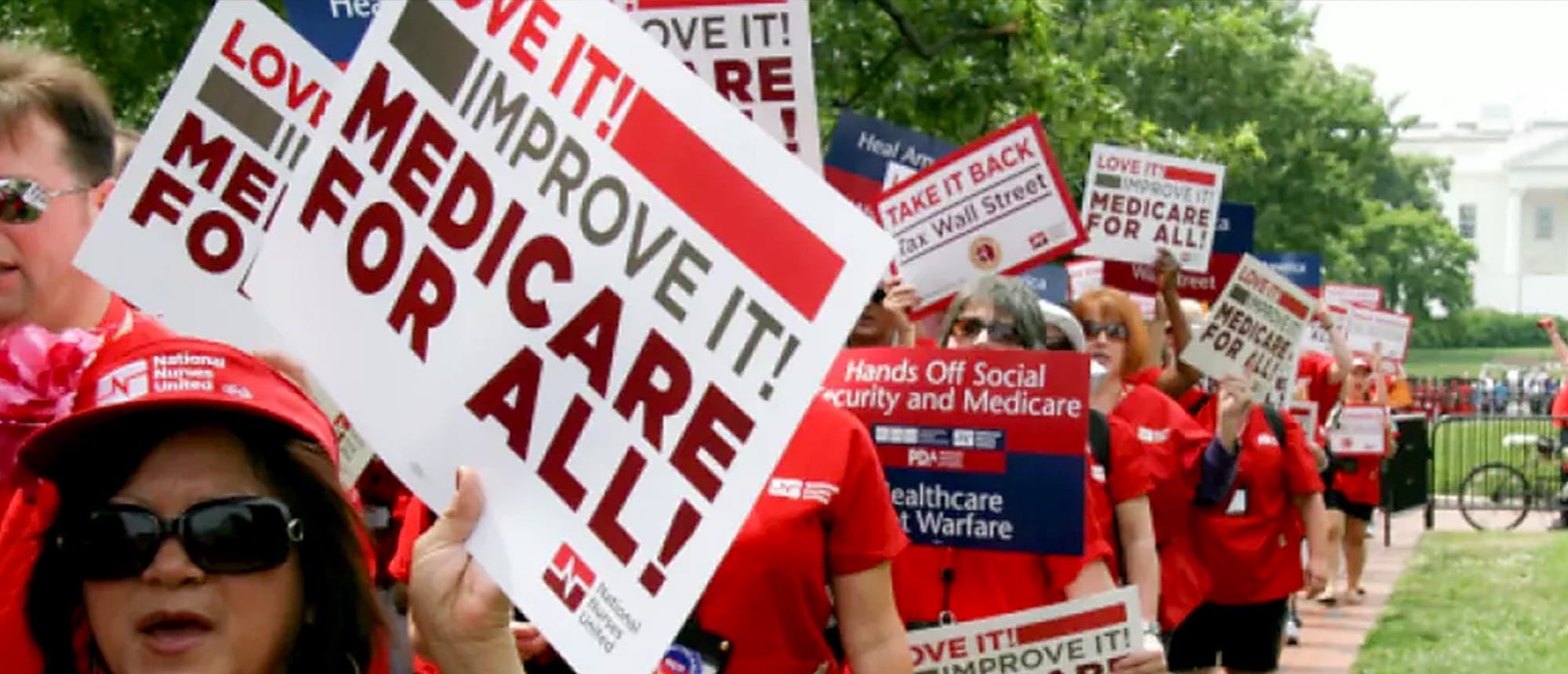Healthcare For Everyone And It Will Cost Less
A single-payer health-insurance system can finance good-quality coverage for all U.S. residents while still reducing overall health-care spending by roughly 10%, according to a study I co-authored last November. All Americans would be able to get care from their chosen providers without having to pay premiums, deductibles or copayments.
Other countries currently provide good health care to residents at a fraction of the U.S. cost. As of 2017, the U.S. spent $3.3 trillion on health care—17% of gross domestic product. Germany, France, Japan, Canada, the U.K., Australia, Spain and Italy spent between 9% and 11% of GDP on health care. Yet some measures—like those based on the amenable mortality rate, which tracks medically preventable deaths—rank the U.S. well below those countries.
“Under Medicare for All [prescription-drug] prices could fall, conservatively, by about 40%.”
The U.S. ranks so poorly in large part because so many Americans lack access to health care. Roughly 30 million people, 9% of the U.S. population, are uninsured. Another 26%, 86 million people, are underinsured—they have insurance but are unable to access medical care because their deductibles or copays are prohibitively high. If all these people were covered under a single-payer system, our study estimates that the overall cost of treatments would rise by about 12%, from $3.3 trillion to $3.6 trillion. Our 12% figure draws from our literature review and the 2016 estimates of Kenneth Thorpe of Emory University. It is modestly higher than the 11.3% estimate the Mercatus Center reported last July.
But Medicare for All could also eliminate 19% of total health-care spending. The largest saving, about 9% of total system costs, would come from dramatically reduced administrative costs in contracting, claims processing, credentialing providers and payment validation—all of which would be unified under one federal agency. Private insurers spend about 12% of their collective budget on administration, while Medicare operates much more efficiently, with administrative costs at around 2%.
Dramatic administrative cuts would mean far less paperwork for doctors and nurses. But administrative simplification would also entail large-scale job losses for the roughly two million people employed both by private health insurers and on the management side of hospitals and doctors’ offices. Our study proposes generous transitional support for these displaced workers, including income, retraining and relocation funds and pension guarantees. We estimate the full cost of this support would amount to about $120 billion, equal to a roughly 2% increase a year in total system costs if spread over a two-year transition phase.
The second major saving our study identified would come from the government negotiating down prescription-drug prices, which would eliminate about 6% of total system costs. Prescription-drug prices in the U.S. are about twice as high as in other advanced economies. Under Medicare for All these prices could fall, conservatively, by about 40%. Further savings would result through operating Medicare for All under a global budgeting system like the one in Canada. Such systems allow regulators to oversee billing and expenses industry-wide, allowing them to control fees for physicians and hospitals, reduce unnecessary treatments and fraud, and encourage preventive care.
“Taking the cost reductions and expanded coverage into account, we estimated that Medicare for All could operate with an overall budget of $2.93 trillion—nearly 10% less than current spending.”
Taking the cost reductions and expanded coverage into account, we estimated that Medicare for All could operate with an overall budget of $2.93 trillion—nearly 10% less than current spending. To finance this, the government begins with $1.9 trillion already in hand—nearly 60% of the total needed—that pays for Medicare, Medicaid and smaller public programs. The government would therefore need to take about $1 trillion out of what businesses and families now pay to private insurers.
Our study has a few ideas to generate those funds. We propose that all businesses that currently purchase health insurance for their employees be mandated to pay 92% of what they now spend into Medicare for All—saving 8% of their health-care expenditures. Larger firms that haven’t provided coverage for every worker would pay $500 for each uninsured worker, while small businesses would be exempt from these premiums. This measure would raise more than $600 billion. After two or three years, this system could make a transition to a 1.78% tax on gross receipts or an 8.2% payroll tax, either of which would generate the needed $600 billion.
The remaining $400 billion would come from two measures: a national sales tax of 3.75% on non-necessities, which would generate about $200 billion, and a wealth tax of 0.38%, after exempting the first $1 million of all families’ net worth, for another $200 billion. We also propose taxing long-term capital gains as ordinary income. The sum of these revenue streams will allow Medicare for All to operate with a 1% budget surplus.
Families would pay these taxes instead of premiums, deductibles and co-pays to private insurers. Except for those in the highest income brackets, this will produce significant savings for families as well as for businesses. Net health-care spending for middle-income families that now purchase insurance for themselves would fall by fully 14% of their income.
Add it all up and Medicare for All is actually the cheaper option for good-quality care in the U.S.

